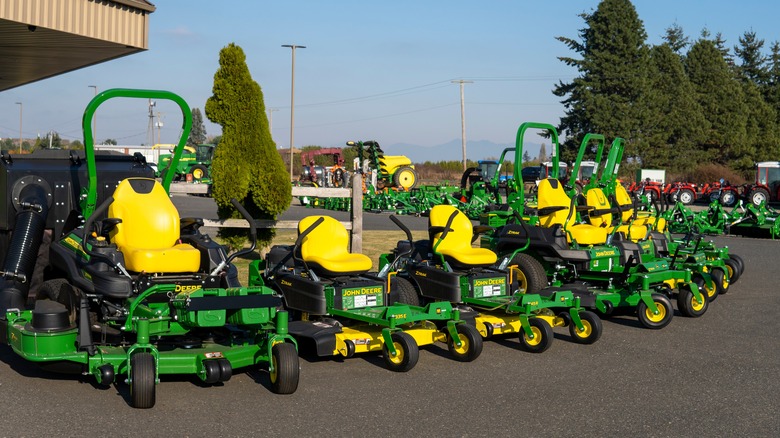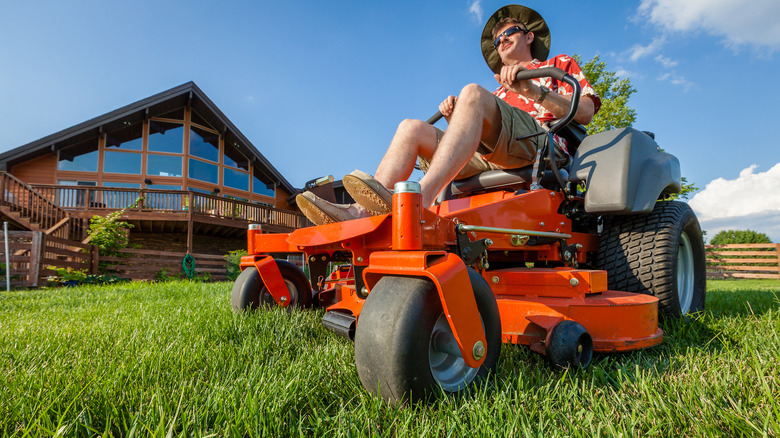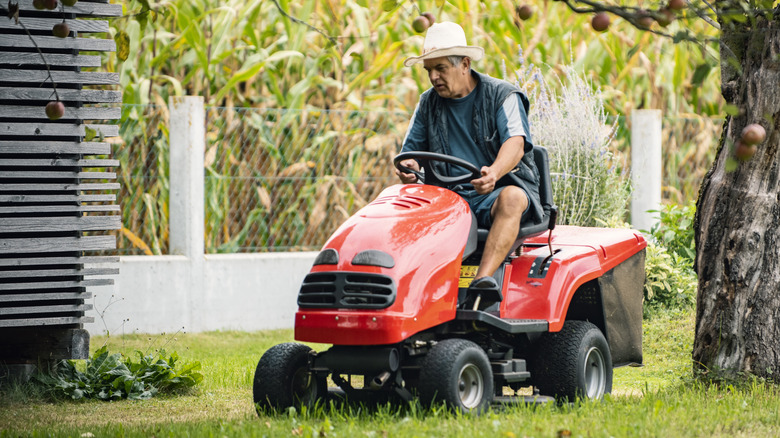Zero-Turn V Riding Lawn Mowers: What Makes Them Different & Which Is Best For You?
When it's time to cut your yard, you may be looking for a way to save time on the chore by purchasing a riding lawn mower design. Your choice will come down to a zero-turn model or a traditional riding model, often called a lawn or garden tractor. Although both of these designs have models made for residential users, you may find one is better for your property size, yard shape, and budget than the other.
In simple terms, zero-turn lawn mowers provide a greater level of maneuverability, making it easier to cut the grass around obstacles or on a property that requires tight turns than a garden tractor riding lawn mower cuts that must make wider turns. The biggest advantage of the garden tractor is that it typically carries a lower cost versus a zero-turn model, though, of course, it will depend on which brand and model you end up buying.
You receive advantages in speed and performance for both designs of riding lawn mowers vs. push lawn mowers, but you'll also pay a significantly higher price for the riding mowers. If you have the budget for them, you'll appreciate the ability to cut the yard much faster with the large mowing deck widths on these ride-on models (42 to 72 inches on average) versus what push mowers offer (19 to 22 inches on average). If you're sold on obtaining a ride-on mower, continue reading to learn more about the specific differences between zero-turn and riding mowers.
Where zero-turn mower designs stand out
Some manufacturers recommend a yard size of at least an acre for a ride-on lawn mower. If you have a large enough space to mow, the zero-turn lawn mower is ideal for a property that has numerous obstacles that require tight maneuvers, like trees or tightly curved edges on the portion of the yard that you mow and maintain. The garden tractor simply cannot maneuver as tightly, as it requires wider turns.
Zero-turn models can make tight turns. This design of lawn mower can turn on its own axis, while continuing to cut the grass, which means you don't miss any spots while turning. This makes it far easier to crisply mow in a back-and-forth pattern. Garden tractors often require multi-point turns or backing up to achieve the same results. The zero-turn mower typically generates a greater straight-line speed than a garden tractor, too. When you couple this advantage with easier maneuverability, you can cut the entire yard faster with this type of design than with a garden tractor.
In terms of what you should know about the zero-turn lawn mower's design differences from garden tractors, the zero-turn model uses two lap bars for steering rather than a steering wheel. This design allows independent control of each front wheel. As the operator, you will sit in front of the motor, which is at the back of the machine. A garden tractor has the motor at the front.
Benefits of garden tractor riding mowers
Some people feel more comfortable with the lawn tractor design as it moves slower. It uses a traditional steering wheel and can't make the same sharp turns as the zero-turn model, which makes it operate more like an ATV or a motor vehicle. The familiarity with the garden tractor's operational design makes it easier for many people to begin mowing with confidence immediately. It can take some time to learn how to use the zero-turn mower with the same level of confidence.
One of the biggest benefits of the traditional riding mower versus the zero-turn model is the cost. The majority of the time, you'll pay more for a zero-turn than a garden tractor when the cutting decks are the same width. Most new garden tractor models fit in the range of $2,000 to $4,000, although some new models with narrow decks are slightly lower than $2,000. How much does a zero-turn lawn mower really cost? You can expect to pay starting price of around $3,000 for this design. However, you'll pay more for a zero-turn with a wider deck.
Another benefit of a garden tractor riding mower is that you often can add attachments to gain additional features. Some models allow you to attach a dump cart for hauling items or a tiller at the back. You also can add carts to the back of a zero-turn mower, but you may need to add a hitch to the mower itself.


